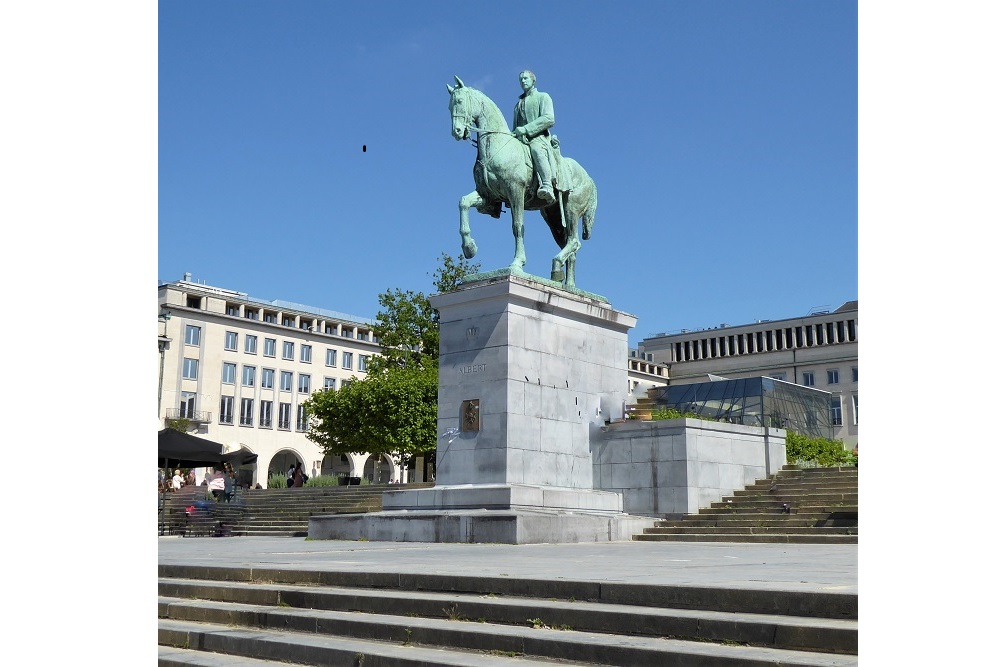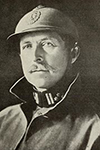Equestrian Statue King Albert I and Queen Elisabeth
On October 11, 1914, the decision had been made not to withdraw the Belgian Army to France, but to gather behind the Yser, more specifically the area of Nieuwpoort, Veurne and Diksmuide. There it would also fight, bringing a definitive end to the war of movement and the trench warfare.
While the government was in exile in Le Havre, King Albert I stayed with his soldiers near the trenches throughout the war. The king stayed a few kilometers from the front in De Panne. In accordance with the constitution, he effectively assumed supreme command of the Belgian armed forces and weighed in on the important decisions to be made during the campaign. He refused to let his army participate in the Allied attacks. This explains why, compared to armies of other countries, far fewer Belgian soldiers were killed.
King Albert I was very popular with the population, he entered Belgian history as a king-knight and king-soldier.
The equestrian statue is a design by architect J.Gobert and sculptor A.Courtens.
It was inaugurated in 1951. The statue is oriented towards the center of Brussels, the king surveys the city.
Across the street is a statue of Queen Elisabeth.
She played an active role in the care of wounded soldiers from the first days of the First World War. She is often depicted in a nurse's uniform.
The Belgian soldiers called her the "queen nurse".
The statue is a work of sculptor R. Cliquet. It stands on a stair stage and is made of natural stone massagis,
The design is by city architect Jean Rombeaux, it was unveiled in 1980.
Source : Heritage cahiers – Brussels : 14-18 images tell.
Do you have more information about this location? Inform us!
Source
- Text: Marie-Christine Vinck
- Photos: Marie-Christine Vinck
Nearby
Museum
Point of interest
- Royal Museums of Fine Arts of Belgium - Brussels
- Watch Building Bloc Dubreucq - Brussel
- Law Courts of Brussels - Brussel
Monument
- Memorial Help to Jews - Brussel
- Monument Killed Railway Employees - Brussel
- Memorial Gabrielle Petit - Brussel
Cemetery
- Congress Column - Tomb of the Unknown Soldier - Brussel
- Park of Honour of Those Who Were Shot - Brussel
- Belgian War Graves Laken - Brussel
Remembrance Stone
- Stumbling Stone Rue de Ruysbroeck 56 - Brussel
- Stumbling Stone Rue de Lombard 72 - Brussel
- Stumbling Stones Rue de Lombard 57 - Brussel






